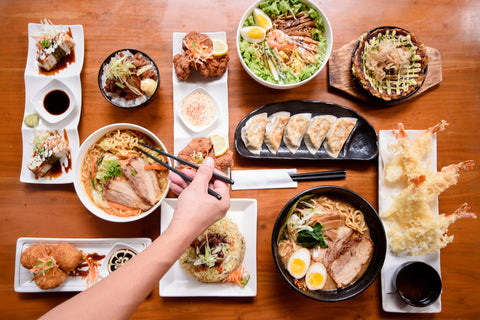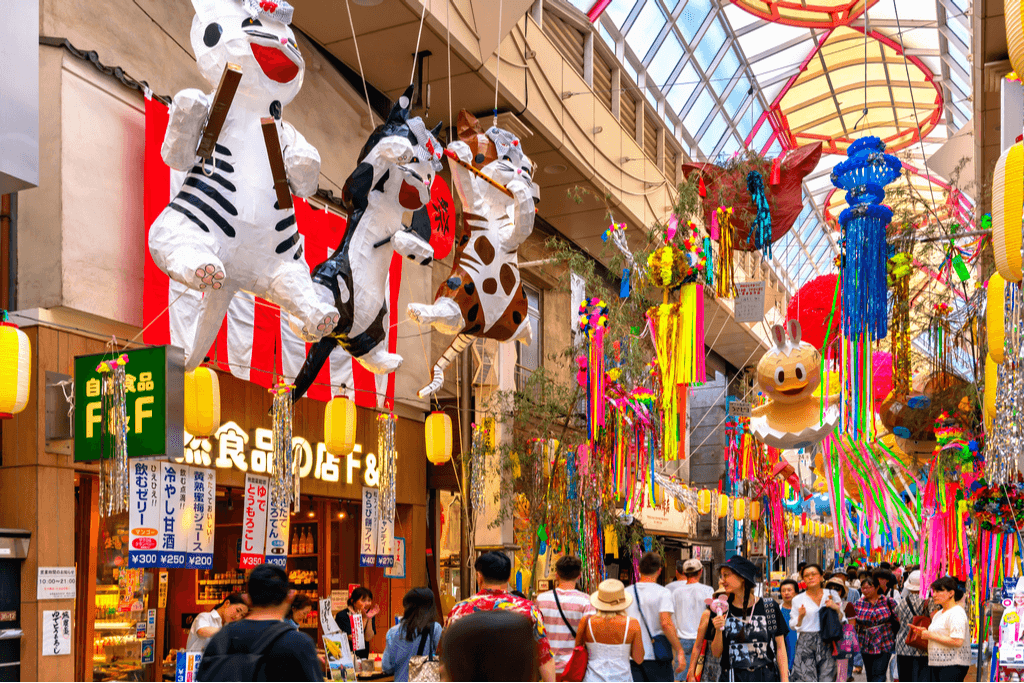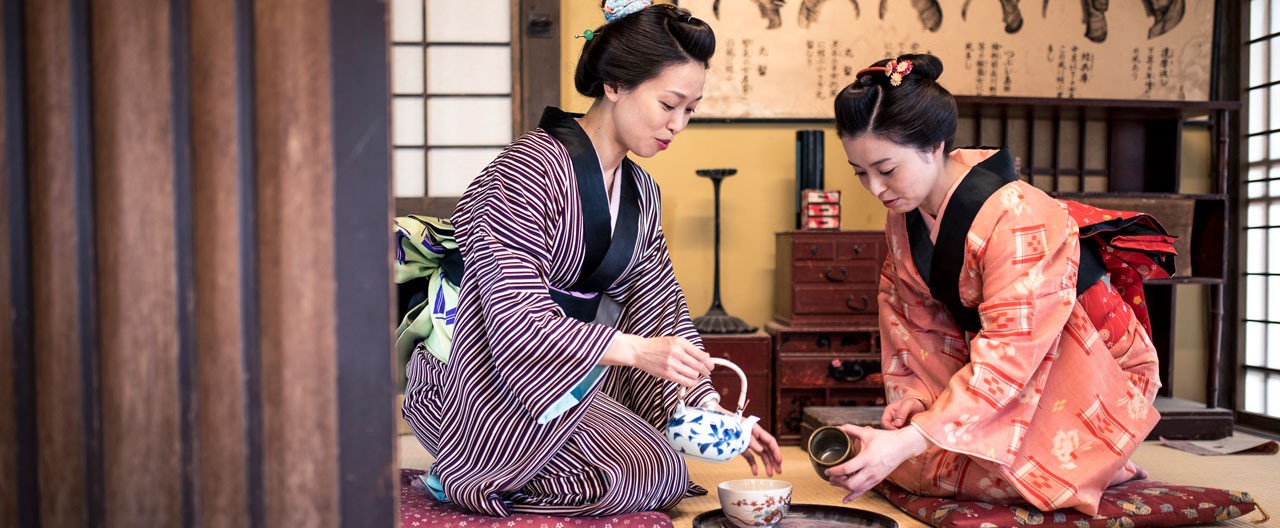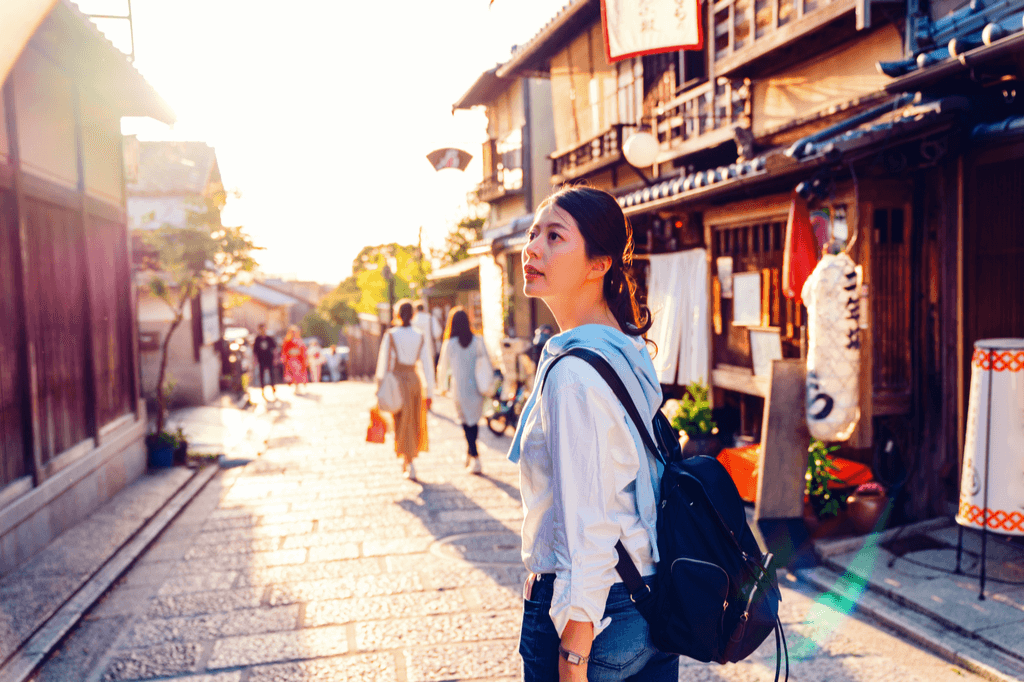Win a Free Trip to Japan!
Experience cherry blossoms and ancient temples
Living in Japan offers a rich tapestry of experiences that reflect the essence of the Japan lifestyle. From understanding the concept of ikigai, which emphasizes pursuing one’s passions and purpose, to embracing minimalism in Japanese homes, the culture is deeply woven into daily life. This guide is designed to help you immerse yourself in local traditions, explore authentic cuisine, and navigate the intricate social norms that shape Japan’s vibrant communities. Engage in local festivals, savor traditional dining etiquette, and discover the beautiful harmony between nature and urban living, ensuring a unique experience as you live like a local.
Understanding the Concept of Ikigai
Ikigai, a term derived from Japanese culture, offers a profound insight into the Japan Lifestyle. Simply put, it translates to "a reason for being." Understanding and embracing ikigai can lead to a balanced and fulfilling life. Here’s how ikigai influences daily living in Japan:
-
Four Key Elements: Ikigai combines four essential aspects:
- What You Love: Engaging in activities that bring you joy.
- What You Are Good At: Utilizing your skills to contribute meaningfully.
- What the World Needs: Identifying societal needs you can address.
- What You Can Be Paid For: Finding ways to earn a living while doing what you love.
-
Benefits of Ikigai:
- Enhances overall happiness.
- Improves mental health and reduces stress.
- Encourages a connection with the community.
-
Practical Steps to Discover Your Ikigai:
- Self-Reflection: Spend time contemplating your passions and strengths.
- Experimentation: Try new activities and hobbies.
- Engagement: Participate in community events to understand local needs.
By understanding and practicing ikigai, you’ll experience a deeper connection to the Japan Lifestyle, allowing you to lead a life rich in purpose and fulfillment. Incorporating this philosophy means engaging mindfully with your surroundings, thus enriching your time spent in Japan.

Traditional Japanese Cuisine and Dining Etiquette
Embracing the Japan Lifestyle means savoring its diverse culinary scene, rooted in tradition and artistry. Japanese cuisine, known as washoku, focuses on seasonal ingredients, harmony, and aesthetics. Here’s what to know about traditional Japanese food and dining etiquette.
Key Aspects of Japanese Cuisine
- Freshness: Prioritize seasonal and local ingredients, reflecting the changing seasons.
- Umami: This fifth taste, often found in soy sauce and miso, plays a central role in flavor profiles.
- Presentation: The visual appeal is just as important; food is arranged beautifully, enhancing the dining experience.
Dining Etiquette Essentials
To truly embrace the Japan Lifestyle, follow these dining manners:
- Use chopsticks: Never stick them upright in rice, as this symbolizes funerals.
- Say “Itadakimasu”: Before starting your meal, this phrase expresses gratitude.
- Don’t pour your own drink: Instead, pour for others, fostering communal spirit.
Comparison of Dining Etiquette
| Aspect | Western Dining Etiquette | Japanese Dining Etiquette |
|---|---|---|
| Utensils | Fork, knife, and spoon | Chopsticks |
| Meal Start | Wait for everyone to be seated | Say "Itadakimasu" before eating |
| Drink Serving | Pour own drinks | Pour for others |
Understanding these nuances will deepen your appreciation for the Japan Lifestyle, allowing you to experience meals like a local. Each dish tells a story, inviting you to savor the flavors that shape Japan’s rich culture.
Embracing Minimalism in the Japanese Home
The Japan Lifestyle deeply values minimalism, which stems from cultural traditions that prioritize simplicity and functionality. Embracing minimalism in your home allows you to create a serene environment that fosters mindfulness and peace. Here are several key principles that define this ethos:
- Declutter Regularly: Japanese homes often feature clean, uncluttered spaces. This promotes both visual and mental clarity. Aim for a "less is more" philosophy by regularly assessing your possessions.
- Natural Materials: Use furniture and decor made from natural materials like wood, bamboo, or rice paper. These elements create a warm, inviting atmosphere while connecting the indoors and outdoors.
- Functional Design: Each piece in your home should serve a purpose. Japanese design emphasizes versatility and practicality, making it essential to invest in multi-functional furniture.
- Tatami Mats: Consider traditional tatami mats as flooring options. They not only bring a natural aesthetic but also encourage a minimalist lifestyle through their low-profile design.
- Zen Space: Designate a small area for relaxation or meditation. Incorporating elements like plants, soft lighting, or a water feature can enhance this calming corner.
By adopting these minimalist principles, you can transform your living space into a reflection of the Japan Lifestyle, which cherishes simplicity, harmony, and intentionality.
Public Transportation: Navigating Japan Like a Local
Navigating the Japan lifestyle often revolves around its highly efficient public transportation system. With a blend of modern technology and traditional values, Japan offers an unparalleled travel experience. Here are key components to make your journey seamless:
Types of Public Transportation
-
Trains and Subways: The backbone of urban transportation.
- Shinkansen (Bullet Train): Fast and comfortable for long distances.
- Local Trains: Ideal for short trips within cities.
- Buses: Complement train networks, especially in rural areas.
- Taxis: Readily available, though generally more expensive.
Tips for Using Public Transportation
- Purchase a Suica or Pasmo Card: These rechargeable cards simplify travel and allow for convenient cashless payments.
-
Understand Train Etiquette:
- Keep noise to a minimum.
- Offer your seat to elderly passengers.
Comparison of Transportation Options
| Transport Type | Speed | Cost | Convenience |
|---|---|---|---|
| Shinkansen | Very Fast (300 km/h) | Higher | Excellent |
| Local Trains | Moderate (up to 100 km/h) | Moderate | Very Convenient |
| Buses | Varies | Affordable | Good (but slower) |
| Taxis | Varies | Expensive | Very Convenient |
Embracing the Japan lifestyle through its public transportation not only increases mobility but also allows for a deeper connection with local culture. By efficiently navigating your surroundings, you’ll immerse yourself in everyday Japanese life like a true local.

Cultural Norms and Social Etiquette
Embracing the Japan Lifestyle means understanding and respecting the rich cultural norms and social etiquette that define everyday interactions. Here are some essential aspects to consider:
- Politeness and Respect: Bowing is a common greeting that shows respect. The deeper the bow, the greater the respect one conveys.
- Use of Honorifics: Addressing people with appropriate honorifics (like -san) reflects politeness. Failing to use these can be seen as disrespectful.
- Gift Giving: It’s customary to offer gifts during visits or special occasions. Presenting the gift with both hands is essential, as it shows sincerity.
- Shoes Off Indoors: Always remove your shoes upon entering a home or traditional space, like a ryokan, as this keeps the interiors clean.
| Etiquette Aspect | Do’s | Don’ts |
|---|---|---|
| Greeting | Bow slightly | Shake hands first |
| Dining | Wait to be seated | Talk loudly |
| Public Behavior | Maintain quietness | Use phones freely |
By adapting to these cultural norms, you enrich your experience and truly immerse yourself in the Japan Lifestyle. Understanding these social nuances not only fosters good relationships but also helps you connect on a deeper level with the people around you.
Engaging in Local Festivals and Community Events
Experiencing the Japan lifestyle becomes truly immersive when you engage in local festivals and community events. Japan boasts a rich tapestry of traditions that come alive during seasonal celebrations, where you can see the cultural spirit of the nation unfold.
Key Festivals to Experience
- Hanami (Cherry Blossom Viewing): Celebrate spring with picnics under blooming sakura trees. This festival marks the beauty of transient life.
- Tanabata (Star Festival): Experience the joy of wish-making by writing your dreams on colorful strips of paper.
- Obon: A Buddhist festival honoring ancestors, featuring dances (Bon Odori) and flickering lanterns.
Benefits of Participation
Engaging in these festivities provides valuable insights into Japanese culture:
- Connection: Foster relationships with locals and other participants.
- Authenticity: Experience traditions and rituals firsthand, making your understanding of the Japan lifestyle more profound.
- Creativity: Participate in workshops to learn traditional crafts, such as making origami or pottery.
Tips for Participation
- Respect Customs: Always study the etiquette associated with each event.
- Dress Appropriately: Wearing a kimono or yukata enhances your experience.
- Volunteer: Getting involved through volunteering can deepen your connection to the community and culture.
By participating in local festivals, you not only create lasting memories but also foster a sense of belonging in the culturally rich tapestry that defines the Japan lifestyle.
The Importance of Nature and Outdoor Activities
Embracing the Japan lifestyle involves a profound appreciation for nature and outdoor activities. This connection is deeply rooted in Japanese culture and can enrich your experience while living like a local. Here are a few key aspects to consider:
- Cultural Significance: Nature plays a vital role in Japanese traditions, from cherry blossom festivals (Hanami) to autumn leaf viewing (Momijigari). Participating in these events fosters a sense of community and appreciation for the changing seasons.
-
Popular Outdoor Activities:
- Hiking: Japan boasts numerous trails, from beginner paths in national parks to challenging hikes on iconic mountains like Fuji.
- Gardening: Many Japanese homes feature serene gardens, emphasizing tranquility and beauty, which are essential in the Japan lifestyle.
- Outdoor Bathing (Onsen): Soaking in natural hot springs surrounded by nature offers both relaxation and a unique cultural experience.
-
Health Benefits:
- Engaging with nature nurtures mental well-being, reduces stress, and promotes physical fitness.
- Activities like walking or cycling in scenic settings allow you to explore the landscape while staying active.
Conclusion: Integrating nature and outdoor pursuits into your daily routine not only enhances your understanding of the Japan lifestyle but also promotes a healthier, more balanced life. Consider setting aside regular time for outdoor adventures to fully appreciate Japan’s natural beauty.

Shopping and Local Markets: Where to Find Authentic Goods
Embracing the Japan Lifestyle involves exploring its vibrant shopping scene, particularly local markets that offer authentic goods. These markets showcase the country’s rich culture and craftsmanship. Here are some key highlights to consider:
-
Traditional Craftsmanship: Many markets feature artisans selling hand-crafted items. Look for:
- Pottery
- Textiles
- Woodwork
- Calligraphy
-
Food Markets: Experience Japan’s culinary delights by visiting local food markets where fresh produce and street food abound. Explore:
- Tsukiji Outer Market (Tokyo)
- Nishiki Market (Kyoto)
-
Unique Souvenirs: Seek out goods that reflect the local culture. Your shopping list might include:
- Furoshiki (wrapping cloth)
- Kokeshi dolls
- Maneki-neko (lucky cat figurines)
| Market Type | Location | Specialty |
|---|---|---|
| Traditional Crafts | Takayama | Handmade goods |
| Food Market | Nishiki | Local delicacies |
| Vintage Thrift Shops | Shimokitazawa | Retro fashion items |
By engaging in this shopping experience, you immerse yourself in the Japan Lifestyle while supporting local artisans and businesses. Remember, exploring these local markets not only enriches your experience but also provides you with unique treasures that tell a story.
Exploring Japanese Arts and Crafts
Diving into the world of Japanese arts and crafts reveals the deep cultural heritage that defines the Japan Lifestyle. These traditional practices not only showcase exquisite craftsmanship but also embody the philosophies and aesthetics cherished in Japanese society. Here are some key aspects to explore:
Types of Japanese Arts and Crafts
- Ceramics: Renowned for its unique glazes and designs, Japanese pottery like Arita and Kutani is celebrated worldwide.
- Calligraphy (Shodo): This elegant art form transforms writing into a visual masterpiece, focusing on brush strokes and character fluidity.
- Textiles: Traditional fabrics like Kimono and Tsutsugaki reflect intricate patterns and vibrant colors, often symbolizing various cultural meanings.
- Origami: The art of paper folding, which creates intricate shapes and designs, embodies patience and precision.
Local Craft Communities
When immersing yourself in the Japan Lifestyle, consider visiting local craft communities. Engaging with artisans enhances appreciation for their skills and provides insights into:
- Workshops: Attend a pottery or calligraphy workshop to create your own piece.
- Marketplaces: Discover authentic goods at local markets or craft fairs where artisans showcase their work.
Why It Matters
Exploring Japanese arts and crafts not only enriches your understanding of the culture but also fosters connections with local communities. Engaging in these traditional practices allows you to experience the beauty and depth of the Japan Lifestyle firsthand. By appreciating these crafts, you contribute to preserving these age-old traditions while also gaining a unique souvenir!
Building Relationships and Making Friends in Japan
Creating meaningful connections is essential when adapting to the Japan lifestyle. Japanese culture values relationships, but the approach to friendship often differs from Western norms. To build relationships and make friends in Japan, consider the following tips:
- Be Respectful: Always maintain a polite demeanor. Bowing is customary in Japan and serves as a sign of respect. A warm smile goes a long way too.
- Engage in Group Activities: Join local clubs or community events. Participating in group activities, such as sports or cultural classes, offers a natural way to meet people.
- Learn the Language: Even basic Japanese phrases can help break the ice. The effort to speak Japanese is often appreciated, which can lead to deeper connections.
- Attend Matsuri (Festivals): Engage in local festivals to absorb the culture. This allows for organic interactions with locals.
- Be Patient: Friendship may take time to develop. Japanese people often value quality over quantity in relationships.
| Aspect | Japan Lifestyle | Western Lifestyle |
|---|---|---|
| Approach to Friendship | Slow, deeper connections | Faster, wider social circles |
| Initial Meetings | Group settings are common | Individualistic hangouts |
| Respect and Politeness | Highly emphasized | Varies, sometimes less formal |
By following these suggestions, you will enhance your experience in Japan. Ultimately, investing time and effort in building relationships will enrich your understanding of the Japan lifestyle, leading to lasting friendships.
Frequently Asked Questions
What are some essential customs and etiquette to follow in Japan?
In Japan, following customs and etiquette is crucial to respecting the culture. Some essentials include bowing as a greeting, removing your shoes before entering homes, and being mindful of quietness in public spaces. It’s also polite to offer and receive items with both hands. Dining etiquette includes saying ‘Itadakimasu’ before meals and ‘gochisousama deshita’ afterward. Understanding and practicing these customs will help you blend in and show appreciation for the local culture.
What local foods should I try to truly experience Japanese cuisine?
To truly experience Japanese cuisine, you should try a variety of local foods such as sushi, ramen, and okonomiyaki. Sushi, with its fresh fish and vinegared rice, is a must-try. Ramen offers many regional variations, each with its unique broth, noodles, and toppings. Additionally, don’t miss out on street food like takoyaki (octopus balls) and taiyaki (fish-shaped cakes filled with sweet fillings). Exploring local izakayas (pubs) can also introduce you to dishes that might not be found elsewhere.
How can I use public transportation efficiently in Japan?
Using public transportation in Japan, especially trains and subways, is efficient and user-friendly. Familiarize yourself with the Japan Rail Pass if you’re traveling between cities, as it offers unlimited travel on JR trains. In metropolitan areas, the subway is often the quickest way to navigate. Downloading mobile apps like Hyperdia or Google Maps can help you plan routes and check schedules. Always observe the local practice of lining up for trains and keep noise to a minimum for a pleasant trip.
What are some cultural festivals or events worth attending in Japan?
Japan hosts a variety of cultural festivals throughout the year that offer insight into local traditions. Famous events include the cherry blossom festivals (Hanami) in spring, which celebrate the blooming of sakura trees. During summer, the Gion Matsuri in Kyoto and the Nebuta Matsuri in Aomori showcase vibrant floats and traditional performances. Winter brings illuminations and the Sapporo Snow Festival, featuring stunning ice sculptures. These events provide a wonderful opportunity to engage with locals and experience authentic cultural practices.
How do I find local experiences or activities when visiting Japan?
To find local experiences or activities in Japan, consider utilizing platforms like Airbnb Experiences, where locals host various activities, from cooking classes to guided city tours. Engaging with travel blogs and forums can also yield unique recommendations tailored to your interests. Additionally, visiting local tourist information centers can provide brochures and suggestions for immersive experiences that locals enjoy, helping you explore beyond typical tourist attractions.
